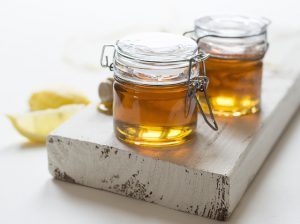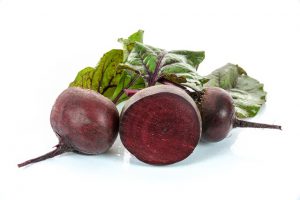
Exquisite Alternatives: Unveiling the Perfect Substitute for Glucose Syrup
Nov 30, 2023
In the dynamic realm of culinary arts, the relentless pursuit of healthier and more refined ingredients has become a passion that chefs and food enthusiasts embrace. Glucose syrup, a ubiquitous sweetener in the culinary world, has recently been scrutinised as health-conscious consumers actively seek alternatives to traditional sugars. This quest has given rise to culinary creativity, unveiling many elegant options that cater to health-conscious demands and elevate the gastronomic experience to new heights.
The Sweet Challenge: Rethinking Glucose Syrup
In the culinary realm, the quest for a suitable substitute for glucose syrup takes centre stage, unravelling a narrative deeply rooted in the essence of flavour and well-being. Glucose syrup, once a revered ingredient for its prowess in enhancing sweetness, texture, and shelf life, is now under the scrutiny of health-conscious culinary enthusiasts.
This indispensable substance has adorned kitchen shelves for decades, contributing its unique characteristics to many recipes. However, the revelation of its high glycemic index and associations with various health concerns has prompted a fundamental reassessment of its role in contemporary cuisine. As chefs and consumers embrace a more health-conscious mindset, exploring alternatives to glucose syrup becomes a challenge and a creative opportunity to redefine the essence of sweetness in our culinary landscape.
The demand for a substitute for glucose syrup is not merely about breaking away from tradition; it’s a journey towards crafting a healthier, more refined gastronomic experience. The culinary world is witnessing a dynamic shift, where the traditional sweetening agent is reconsidered in light of emerging alternatives that promise to sweeten our palates and contribute to overall well-being.
In this exploration, chefs become culinary alchemists, experimenting with a palette of substitutes that includes honey, maple syrup, and agave nectar. Each alternative introduces a distinctive note to the symphony of flavours, offering a nuanced sweetness that goes beyond the conventional. The rich history of honey, the sophisticated depth of maple syrup, and the low-glycemic elegance of agave nectar present themselves as viable candidates, transforming the sweet challenge into an exciting journey of culinary innovation.
The detrimental effects of excessive sugar consumption on health have been well-documented. From contributing to obesity to being a significant factor in the rise of diabetes, the dark side of sugar has cast a shadow over our culinary choices. As more consumers become health-conscious, the demand for alternatives to glucose syrup has intensified, challenging the culinary world to explore innovative and elegant substitutes.
The Rise of Natural Sweeteners: A Symphony of Health and Flavor
In the unfolding saga of reimagining sweeteners, the spotlight turns to nature’s treasures, where honey, maple syrup, and agave nectar dance together in a harmonious symphony of health and flavour.
Honey: A Timeless Elixir
Indeed, honey has a long and rich history as a sweetener and culinary ingredient. It has been valued for its unique flavours, versatility, and potential health benefits. Here are some critical points about honey as a timeless elixir:
1. Natural Sweetness: Honey is known for its natural sweetness, which comes from its unique composition of sugars, primarily glucose and fructose. Its distinct flavour profile can vary depending on the floral source of the nectar bees collect.
2. Complexity of Flavors: Honey offers diverse flavours, from mild and floral to robust and earthy. The specific flavour profile is influenced by factors such as the type of flowers the bees gather nectar from and the local environmental conditions.
3. Health Benefits: While honey is primarily used as a sweetener, it also possesses potential health benefits. It contains trace amounts of vitamins, minerals, and antioxidants, although the quantities may vary depending on the specific type of honey.
4. Antimicrobial Properties: Honey has been recognized for its antimicrobial properties, which can be attributed to its low water content, slightly acidic pH, and the presence of certain enzymes and compounds. Historically, these properties have been utilized for wound healing and as a natural preservative.
5. Culinary Versatility: Honey is a versatile ingredient in various culinary applications. It can be used as a sweetener in beverages, baked goods, dressings, marinades, and sauces. Its unique flavours can enhance the taste and complexity of dishes, providing a nuanced depth beyond simple sweetness.
6. Cultural Significance: Honey holds cultural significance in various parts of the world. It has been used in traditional remedies, religious rituals, and culinary traditions across different cultures and civilizations throughout history.
While honey can be a healthier alternative to refined sugar due to its potential nutritional benefits and unique flavours, it is still a sweetener that should be consumed in moderation. It is important to note that infants under one should not consume honey due to the risk of botulism.
Honey’s timeless appeal lies in its natural sweetness, diverse flavours, potential health benefits, and cultural significance, making it a beloved and transformative ingredient in culinary traditions worldwide.
Maple Syrup: From Breakfast to Culinary Elegance
The journey of maple syrup, derived from the sap of sugar maple trees, unfolds from breakfast tables to haute cuisine. Its distinct flavour, drawn from the trees’ essence, elevates it to a sophisticated alternative to glucose syrup. Here are some additional points to highlight the characteristics and appeal of maple syrup:
1. Natural and Distinct Flavor: Maple syrup has a unique and distinctive flavour that differentiates it from other sweeteners. Its taste is derived from the sap of sugar maple trees, which is collected, boiled down, and transformed into the rich, sweet syrup we know. The flavour profile can vary depending on the region, climate, and processing methods.
2. Versatility in Culinary Applications: Maple syrup is a versatile ingredient in various culinary creations. It is commonly used as a topping for pancakes, waffles, and French toast, but its uses extend far beyond breakfast. Chefs and home cooks incorporate maple syrup in sauces, glazes, marinades, dressings, desserts, and even savoury dishes, adding depth, complexity, and a touch of elegance to their creations.
3. Sophistication and Elegance: The unique flavour profile of maple syrup lends a touch of sophistication and elegance to dishes. Its complex sweetness and subtle hints of caramel and woodsy notes can transform a simple dish into a refined culinary experience.
4. Lower Glycemic Index: Maple syrup has a lower glycemic index than refined sugars and some other sweeteners. This means it causes a slower and more gradual rise in blood sugar levels, making it a favourable option for those seeking healthier sweeteners or following a low glycemic diet.
5. Natural and Sustainable: Maple syrup is a natural and sustainable sweetener. It is made from the sap of maple trees, which can be harvested without harming the tree’s long-term health. The process of maple syrup production relies on the seasonal cycle of freezing and thawing, making it a unique and environmentally friendly endeavour.
6. Cultural Significance: Maple syrup holds cultural significance in regions where sugar maples grow, particularly in North America, Canada, and the United States. Maple sugaring is a tradition that has been passed down through generations, and maple syrup festivals and events celebrate this rich heritage.
Overall, maple syrup’s journey from breakfast tables to haute cuisine showcases its versatility, sophistication, and lower glycemic index. Its natural flavour and cultural significance make it a beloved and celebrated ingredient, bringing a touch of elegance and indulgence to a wide range of culinary creations.
Agave Nectar: A Subtle Elevation
Derived from the succulent agave plant, agave nectar emerges as a rising star in the constellation of natural sweeteners. Compared to traditional sugars, its lower glycemic index positions it as an effortless substitute for glucose syrup in various culinary applications.
1. Derived from the Agave Plant: Agave nectar is derived from the sap of the Agave plant, a succulent native to Mexico and other arid regions. The sap is extracted and then processed into a sweet syrup-like consistency.
2. Lower Glycemic Index: Agave nectar has a lower glycemic index compared to traditional sugars, meaning it causes a slower and more gradual increase in blood sugar levels. This characteristic has made it a popular choice for individuals seeking to manage their blood sugar levels or follow a low glycemic diet.
3. Versatility in Culinary Applications: Agave nectar’s liquid form and mild taste make it a versatile sweetener easily incorporated into various culinary creations. It can be used as a substitute for other liquid sweeteners like honey, maple syrup, or even traditional table sugar in recipes for beverages, desserts, baked goods, dressings, and sauces.
4. Mild and Subtle Flavor: Agave nectar has a mild and subtle flavour profile with notes of sweetness that are less pronounced than traditional sugars. This characteristic allows it to blend well with other ingredients, making it an appealing choice for those looking for a sweetener that won’t overpower the flavours of their dishes.
5. Vegan-Friendly Alternative: Agave nectar is a popular sweetener among individuals following a vegan lifestyle because it is derived from plants and does not involve the exploitation of animals.
6. Sustainable and Environmentally Friendly: Agave plants are known for their ability to thrive in arid conditions, requiring minimal irrigation and resources. This makes agave nectar a potentially more sustainable option than sweeteners derived from crops requiring more water and resources to grow.
In Summary: With its liquid form and subtle flavour, agave nectar emerges as a captivating option for both health-conscious individuals and creative chefs. As it effortlessly ingrains itself into the preferences of culinary enthusiasts, agave nectar harmoniously completes the trio of natural alternatives, each adding its distinctive touch to the ever-evolving symphony of refined and healthier culinary experiences.
Culinary Exploration: Optimal Substitutes for Glucose Syrup
The art of substitution in the culinary world opens up a realm of creativity and innovation. Chefs and culinary enthusiasts continually explore alternatives to traditional ingredients, including glucose syrup, to reimagine and elevate dishes. Here are some points to further explore the art of substitution:
1. Expanding Flavor Possibilities: Substituting glucose syrup with alternative sweeteners allows chefs to explore a broader range of flavours. Each sweetener brings its unique taste, nuances, and aromas, which can add depth and complexity to dishes. This experimentation with different flavours can lead to unexpected and delightful culinary experiences.
2. Health-Conscious Choices: Substitution in the culinary landscape often arises from a desire to make healthier choices. Many alternative sweeteners, such as honey, maple syrup, and agave nectar, offer potential health benefits and lower glycemic indexes than glucose syrup or refined sugars. By using these substitutes, chefs and home cooks can cater to health-conscious diners without compromising taste and quality.
3. Meeting Dietary Preferences and Restrictions: Substitution is crucial in accommodating dietary preferences and restrictions. For example, vegan-friendly alternatives like agave nectar or maple syrup allow chefs to create dishes catering to individuals following a vegan lifestyle. Additionally, substituting gluten-free sweeteners can help accommodate those with gluten sensitivities or celiac disease.
4. Balancing Sweetness and Texture: Substitution involves replacing one ingredient with another and considering the impact on sweetness and texture. Different sweeteners may have varying sweetness levels and can affect a dish’s overall balance and mouthfeel. Skilled chefs understand how to adjust the amount and other ingredients to maintain the desired balance and texture, ensuring a harmonious culinary experience.
5. Pushing Boundaries and Inspiring Innovation: Substitution encourages chefs and culinary enthusiasts to push the boundaries of traditional recipes, inspiring innovation and creativity. Experimenting with alternative sweeteners opens up new avenues for flavour pairings, unexpected combinations, and unique culinary techniques. This continuous exploration drives the culinary landscape’s evolution and keeps the cooking art vibrant and exciting.
The Alchemy of Flavor: A Symphony of Substitutes
In this culinary playground, the richness of honey, the depth of maple syrup, and the subtlety of agave nectar emerge as key players in the alchemical symphony.
1. Harmonizing Sweetness: The natural sweeteners—honey, maple syrup, and agave nectar—bring their unique sweetness profiles to the culinary canvas. Chefs, akin to alchemists, experiment with these sweeteners, combining them in intricate proportions to create harmonious flavours. The interplay of these natural sweeteners allows for a balance of sweetness that transcends the ordinary and adds depth to culinary creations.
2. Layering Flavors: The alchemy of flavour extends beyond sweetness alone. Each natural sweetener possesses its distinct taste and aroma, contributing to the complexity of flavours in a dish. Chefs skillfully layer these flavours, considering the floral notes of honey, the earthiness of maple syrup, and the subtle nuances of agave nectar. This layering creates a tapestry of taste that enriches and elevates the overall culinary experience.
3. Enhancing Complexity: Natural sweeteners can enhance the complexity of a dish by adding depth and dimension to the flavour profile. The richness of honey, the robustness of maple syrup, and the delicate subtlety of agave nectar can transform a simple recipe into a multi-dimensional culinary delight. The alchemical combination of these sweeteners unlocks the potential for a symphony of flavours that captivate the palate.
4. Inspiring Creativity: Flavour alchemy inspires chefs to unleash their creativity and explore new possibilities. By experimenting with different combinations and proportions of natural sweeteners, chefs can create unique and innovative flavour profiles that surprise and delight diners. This creative exploration drives the evolution of culinary artistry and encourages chefs to push the boundaries of flavour continuously.
5. Elevating Culinary Creations: Combining natural sweeteners in intricate proportions elevates culinary creations to new heights. This symphony of substitutes enhances the taste of dishes and adds a touch of elegance and sophistication. It allows chefs to craft extraordinary dining experiences that engage all the senses and leave a lasting impression.
Like modern-day alchemists, chefs experiment with these sweeteners, blending them in intricate proportions to craft flavours that transcend the ordinary. The flavour alchemy extends beyond sweetness, becoming a rich tapestry that enhances culinary creations.
Baking Beyond Boundaries: Precision Meets Creativity
The delicate dance of substitution finds its crescendo in baking, where precision and creativity converge. As bakers navigate the shift from glucose syrup to alternatives, they discover that honey, maple syrup, and agave nectar sweeten and infuse nuanced flavours into the final confection. This transition is a culinary revelation—a departure from the conventional and a step towards crafting desserts that are not only healthier but also a testament to exquisite taste and presentation.
1. Flavorful Substitutions: Bakers who venture into substituting glucose syrup with natural sweeteners unlock a world of nuanced flavours in their baked goods. Honey, maple syrup, and agave nectar bring their distinct flavour profiles to the table, adding depth and complexity to the final confections. These sweeteners infuse delightful taste notes beyond mere sweetness, creating a more dynamic and enjoyable eating experience.
2. Balancing Act: Baking is often considered a precise science, where measurements and ratios matter. Bakers must carefully balance the final product’s sweetness, moisture content, and texture when substituting glucose syrup with alternative sweeteners. This requires an understanding of the characteristics of each sweetener and the ability to adjust other ingredients to maintain the desired consistency and structure of the baked goods.
3. Healthier Indulgence: The transition from glucose syrup to natural sweeteners in baking allows for healthier indulgence without compromising taste and presentation. Honey, maple syrup, and agave nectar offer potential health benefits and lower glycemic indexes than traditional refined sugars. Bakers can cater to health-conscious individuals by providing delicious desserts and being mindful of nutritional considerations.
4. Culinary Revelation: The shift from glucose syrup to natural sweeteners in baking is a culinary revelation that challenges conventional methods and opens up new possibilities. Bakers can explore unique flavour combinations, experiment with different textures, and create desserts that stand out for their exquisite taste and presentation. This departure from the ordinary sparks creativity and innovation in the baking realm.
5. Exquisite Taste and Presentation: Substituting glucose syrup with natural sweeteners in baking allows for desserts that are not only healthier but also a testament to exquisite taste and presentation. The nuanced flavours and aromas of honey, maple syrup, and agave nectar elevate the sensory experience of indulging in baked goods. Bakers can also use these natural sweeteners to create beautiful glazes, drizzles, and decorations, adding visual appeal to their creations.
Elevating Desserts: A Sweet Revolution
The shift from glucose syrup to alternative sweeteners in baking signifies a sweet revolution. The limitations of traditional ingredients no longer confine bakers; they are empowered to explore a palette of natural substitutes that contribute to the overall sensory experience. The desserts crafted through this sweet revolution are not merely treats for the taste buds but masterpieces that delight the eyes and satisfy the soul.
As the culinary landscape continues to evolve, the art of substitution becomes a celebration of creativity and a nod to the ever-growing awareness of healthier choices. Each dessert, infused with the richness of honey, the depth of maple syrup, or the subtlety of agave nectar, becomes a testament to the intricate dance of flavours, marking a paradigm shift in how we perceive and indulge in the sweet pleasures of culinary artistry.
The Psychological Symphony: A Subtle Influence on Palates
Perception and Pleasure: The Psychology of Sweetness
In culinary artistry, the psychology of sweetness emerges as a silent conductor orchestrating the acceptance of substitute ingredients. As society becomes increasingly conscientious about the repercussions of dietary choices on well-being, the psychological dynamics surrounding using alternatives to glucose syrup become increasingly focused. Knowing that a sweetener is a healthier option becomes a psychological catalyst, enhancing the overall dining experience and rendering indulgence guilt-free.
This psychological shift is not just about taste; it’s a dance between the mind and the palate, where awareness intertwines with pleasure. The acceptance of substitutes becomes a subtle acknowledgement of the evolving relationship between consumers and their food, transcending mere flavour preferences to embrace a holistic understanding of culinary choices. As individuals recognize the health benefits of alternatives, choosing becomes a mindful exercise, transforming the dining experience into a journey of both nourishment and enjoyment.
Aesthetic Appeal: Plating Pleasure with Elegant Alternatives
Beyond flavour, the visual presentation of dishes becomes a potent contributor to culinary enjoyment. Incorporating elegant alternatives to glucose syrup, such as honey drizzles or carefully poured maple syrup, introduces an artistic dimension to the plate. This aesthetic pleasure not only delights the eyes but also becomes an integral part of the psychological satisfaction derived from making conscious ingredient choices that align with a healthier lifestyle.
The artistry of plating with natural sweeteners elevates the dining experience to a multisensory journey. Each dish, adorned with the rich hues and textures of honey or the amber cascade of maple syrup, tells a visual story of craftsmanship and intention. The mere sight of these alternatives adds to the psychological pleasure, reinforcing that indulgence can coexist harmoniously with health-conscious decisions.
Sensory Harmony: The Fusion of Taste and Sight
In the psychology of sweetness, the fusion of taste and sight creates a sensory harmony that resonates deeply with consumers. The act of savouring a dish extends beyond the flavour receptors on the tongue; it encompasses the entire sensory spectrum. The golden glow of honey or the velvety flow of maple syrup becomes not just an accompaniment but an integral part of the dining experience.
As individuals engage with visually appealing dishes, a subtle psychological satisfaction ensues. The conscious choice to opt for elegant alternatives aligns with a broader shift towards mindful eating. The awareness that these substitutes not only enhance the visual allure of a meal but also contribute to overall well-being adds a layer of fulfilment to the dining ritual. The psychological symphony, conducted by the interplay of taste and aesthetics, becomes a silent but influential guide in shaping culinary preferences.
Empowerment through Awareness: Shaping the Culinary Landscape
The evolving psychology of sweetness is inherently tied to the empowerment of consumers through awareness. Informed choices are not just about selecting flavours that please the palate; they extend to understanding the impact of those choices on holistic well-being. The psychological satisfaction derived from opting for substitutes for glucose syrup is rooted in this newfound sense of empowerment—a realization that every meal is an opportunity to align personal values with culinary indulgence.
As the culinary landscape transforms, the psychological influence on palates becomes a driving force in shaping the food narrative. Armed with knowledge about healthier alternatives, consumers actively participate in a culinary revolution where taste and well-being coalesce. The choices made at the dining table reflect a deeper understanding of the intricate relationship between food, pleasure, and health, marking a paradigm shift that extends far beyond mere culinary preferences.
Crafting Culinary Narratives: From Chef’s Palette to Consumer’s Plate
Chef’s Innovation: A Symphony of Flavors
In the hands of culinary maestros, the exploration of substitutes for glucose syrup unfolds as a captivating narrative of innovation. Skilled chefs transform the kitchen into a canvas, and their creative brushstrokes with honey, maple syrup, and agave nectar testify to their ability to craft symphonies of flavours. Beyond mere substitutions, these chefs reimagine traditional recipes, infusing fresh creativity into their culinary creations.
As these artisans experiment with natural sweeteners, they showcase a profound understanding of balance, texture, and the evolving preferences of a health-conscious audience. The culinary world, transformed into a stage, witnesses the unfolding drama of tastes and aromas, each dish a unique expression of the chef’s prowess and commitment to gastronomic delight and well-being.
Innovative Fusion: Beyond the Ordinary
The journey from glucose syrup to alternative sweeteners is not just a shift; it’s an innovative fusion of tradition and modernity. Chefs navigate this transition with a keen sense of adventure, blending the familiar notes of honey’s richness, maple syrup’s depth, and agave nectar’s subtlety. This fusion transcends the ordinary, creating a new culinary language that captivates the taste buds and challenges the conventional.
The chef’s palette extends beyond the flavours—it encompasses the textures, aromas, and visual aesthetics composing a holistic culinary experience. The result is not merely a dish but a work of art, a fusion of innovation and tradition that resonates with the discerning palates of the modern consumer.
Consumer Empowerment: A Cultural Shift towards Mindful Choices
In tandem with the chef’s creative odyssey, a parallel narrative unfolds—a story of consumer empowerment and a cultural shift towards mindful eating. In an era where information is at our fingertips, consumers are increasingly empowered with knowledge about the impact of their food choices. The demand for healthier alternatives to glucose syrup is not just a trend; it’s a conscious movement towards a more informed and health-centric approach to dining.
The narrative of elegant substitutes aligns seamlessly with this cultural shift, becoming a pivotal chapter in the evolving story of culinary consciousness. Armed with insights into the potential health benefits of natural sweeteners, consumers actively participate in shaping the culinary landscape. Their choices are not merely a matter of taste but a statement—a commitment to well-being, an endorsement of sustainability, and an encouragement for chefs and food manufacturers to prioritize health without compromising the symphony of flavours.
Dynamic Dialogues: Chef-Consumer Collaboration
The interaction between chefs and consumers becomes dynamic, where culinary innovations are met with enthusiasm and curiosity. This collaboration is not a one-way street; it’s a reciprocal exchange of preferences, feedback, and evolving culinary aspirations. Chefs, attuned to the desires of a health-conscious audience, respond with ever more creative and health-enhancing alternatives, further enriching the narrative of culinary exploration.
The chef’s role evolves beyond that of a creator to that of a collaborator, interpreting the nuanced feedback from consumers and integrating it into their culinary masterpieces. This synergy propels the culinary narrative forward, ensuring that each dish meets the gastronomic expectations of the audience and aligns with their aspirations for healthier and more conscious living.
Culinary Landscape Redefined: A Tapestry of Choices
The ongoing narrative of substitutes for glucose syrup is a vibrant thread woven into the larger tapestry of a redefined culinary landscape. It is a story that encapsulates the creativity of chefs, the empowerment of consumers, and the evolving dynamics between them. As the culinary world continues to unfold its chapters, each dish becomes a page, and each ingredient a word in a narrative that celebrates not only the artistry of food but also the shared journey of chefs and consumers towards a healthier, more flavorful future.
1. Empowering Consumer Choices: The availability of substitutes for glucose syrup empowers consumers to make informed choices about the ingredients they consume. With a wide range of natural sweeteners like honey, maple syrup, and agave nectar, consumers can select options that align with their taste preferences, dietary needs, and health goals. This shift in the culinary landscape gives individuals a sense of agency in shaping their culinary experiences.
2. Chef as Curator: Chefs act as curators, weaving together the diverse threads of ingredients and substitutes to create culinary masterpieces. They carefully select and combine natural sweeteners and other components to craft dishes that engage the senses and tell a story. The role of the chef transcends mere cooking and becomes an artistic expression that reflects their creativity, skill, and vision.
3. Collaboration and Dialogue: The evolving dynamics between chefs and consumers create a collaborative and ongoing dialogue. Chefs listen to the preferences and needs of their diners, incorporating alternative sweeteners to accommodate dietary restrictions, health concerns, and flavour preferences. This interaction fosters a shared journey where chefs and consumers co-create the culinary landscape, influencing and inspiring each other.
4. Health and Flavor in Harmony: The redefined culinary landscape embraces a harmonious blend of health and flavour. The use of substitutes for glucose syrup allows for the creation of both nourishing and delicious dishes. Natural sweeteners offer unique taste profiles while potentially providing health benefits and lower glycemic indexes. This fusion of health and flavour demonstrates that culinary experiences can be enjoyable and mindful of personal well-being.
5. An Ever-Unfolding Narrative: The culinary landscape is a narrative that continuously unfolds, with each dish and ingredient contributing to the larger story. Chefs and consumers embark on a shared journey, exploring new flavours, techniques, and substitutes. The narrative celebrates the artistry of food, the joy of discovery, and the collective pursuit of a future where culinary experiences are elevated, healthier, and more fulfilling.
The tapestry of choices in the culinary world is a testament to the dynamic relationship between chefs and consumers. The narrative celebrates creativity, empowerment, and pursuing a healthier and more flavorful future. As each dish unfolds, the culinary landscape evolves, embracing new ingredients, techniques, and ideas that enrich the shared journey of chefs and consumers alike.
Conclusion: Substitute for glucose syrup
In the quest for the perfect substitute for glucose syrup, the culinary world finds itself at the intersection of tradition and innovation. The rise of elegant alternatives such as honey, maple syrup, and agave nectar caters to the demand for healthier options and elevates the overall gastronomic experience. As chefs and consumers alike embrace this sweet evolution, the narrative of culinary creativity continues to unfold, promising a future where health and indulgence coexist harmoniously on the plate. The symphony of flavours, driven by a collective desire for elegant alternatives, marks a sweet victory for the evolving palate and a step towards a healthier, more sophisticated culinary landscape.
Diverse Views: Compelling Insights

Glucose Syrup vs. Corn Syrup: A Sweet Showdown

Which of the Following Is True of Portfolio Diversification?

Early Retirement Extreme Summary: Facts Minus the Fluff

Considering the Impact of Inflation, Why Is Investing Important for Long-Term Financial Stability?

Why is Investing a More Powerful Tool to Build Long-term Wealth Than Saving

Beetroot Benefits for Men: Extraordinary Potential, Humble Root

Best Saffron Supplement: Unveiling its Tantalizing Health Benefits

Milk Thistle for Dogs: Unveiling the Enigma of Canine Well-being

Revealing the Hidden Dangers: Toxic Ingredients in U.S. Foods

Fully Hydrogenated Oil: Tasty Threats With Deadly Effects

Restoring Vision: Exploring Hypotheses for Vision Rehabilitation

Rediscover Vitality: Age Defying Strength with Mumio Supplement

Inductive vs Deductive Arguments: Strategies for Sound Reasoning

Restoring Vision Naturally: Uncomplicated and Effective Solutions



